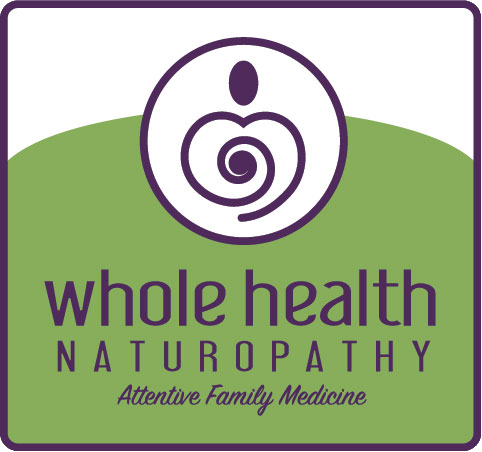The official start of Summer has arrived, and it’s the perfect time to get outside and enjoy the weather! Enjoying the sunshine and the great outdoors is an important part of maintaining health and wellness. However, spending more time in the sun can increase risks for skin cancer and premature aging of the skin. This month’s article is intended to help reduce risks for skin cancer by dispelling myths, easing fears about sunscreen, and offering practical sun safety tips to reduce exposure.
Commonly, patients tell me that they do not apply sunscreen. There are a variety of reasons they cite as their rationale for not using it. The common reasons include the desire to get Vitamin D from the sun, concerns about the ingredients in sunscreen, and the belief that if their skin does not burn easily, they are not at risk for skin cancer.
Skin cancer can affect anyone regardless of skin color. Some types of skin cancer are slow-growing and less likely to spread to other areas. Melanoma is a fast-growing skin cancer with the ability to spread to other sites, and it can be fatal if not detected early. Demographics for the incidence of melanoma in 2021 showed that the highest incidence occurred in white males. Washington is among the top 10 states with the highest incidence of melanoma.
If you think that because your skin does not burn in the sun that you are not at risk for skin cancer, think again. When skin is exposed to ultraviolet (UV) radiation from the sun, it causes an increase in the production of a pigment called melanin which acts as a filter against the sun’s rays. This reaction produces a tan. Over time the sun causes damage to the DNA of these pigment-producing cells. This damage leads to freckling, age spots, and—more seriously—contributes to the development of melanoma and other skin cancers. Nearly all skin cancers could be prevented by limiting unprotected exposure to UV rays from the sun.
Sun exposure on the bare skin starts a biochemical process that helps the body produce Vitamin D. There’s a fine balance between sun safety and Vitamin D production. It’s not necessary to tan or burn to make Vitamin D from the sun. The Skin Cancer Foundation notes while proponents for obtaining Vitamin D from the sun recommend only exposing the skin without sunscreen 2 to 3 times weekly for 10 to 15 minutes, it is not the safest way for the body to receive Vitamin D. Unfortunately, within 10-15 minutes fair-skinned people start to burn and many people forget to apply sunscreen after this interval.
When it comes to choosing a sunscreen, there is growing concern about ingredients that have been linked to hormone disruption, enhanced oxidative damage of the skin, and allergic reactions (not to mention negatively impacting the health of coral reefs). These chemicals of concern include sunscreen ingredients like oxybenzone, octinoxate, homosalate, octocrylene, and retinyl palmitate. The Food and Drug Administration is currently reviewing how ingredients in sunscreen are evaluated for safety. My top recommendation is to use a mineral-based sunscreen made from zinc oxide or titanium oxide. Yes, I know they can be thicker and require more patience and diligence to apply thoroughly. My second choice would be an avobenzone containing sunscreen. I caution against making homemade versions of sunscreen, which have not been proven to protect against sunburn consistently. And in a pinch, if I had to be out in the sun and had no other option, I would use any sunscreen to prevent another sunburn that would increase my risk for melanoma regardless of the questionable ingredients listed above.
Here are a few ways to decrease sun exposure and skin cancer risk:
- Seek shade under an umbrella, tree, or shelter before you feel the effects of the sun.
- Avoid the sun when UV rays are strongest, generally between 10 a.m. and 4 p.m.
- Wear protective clothing such as long sleeves and pants, when possible, and a wide-brimmed hat covering the ears and back of the neck.
- Generously apply sunscreen SPF 30 or higher with broad-spectrum protection. Ideally, apply 30 minutes before going outside. Wear sunscreen on cloudy days too. Don’t forget to reapply every two hours and more often when swimming or sweating. You’ll also want to reapply more often when doing activities on surfaces that reflect UV light like water, sand, snow, and pavement. Make sure your sunscreen is not expired; outdated sunscreen loses its protective potency.
- Wearing sunglasses prevents UV damage to the eyes. UV damage increases cataract formation and increases the risks of ocular melanoma.
- Know the UV Index (UVI) rate. This is a rating that indicates the potential danger of sun exposure. The scale ranges from 1 to 11, and the higher the number, the greater the risk for UV skin damage. UV Index information can be obtained on weather reports and apps.
Talk to your naturopathic doctor about ways to decrease your risk for melanoma and other forms of cancer.
Dr. Stacie Wells, ND, FAAEM, is a Naturopathic Doctor & Fellow of the American Academy of Environmental Medicine. She practices at the Whole Health Naturopathy in Olympia, WA, and may be reached at 360.943.9519 or frontdesk@wholehealthnaturopathy.com.
Note: This content is not intended to be a substitute for professional medical advice, diagnosis, or treatment. Always seek the advice of your physician or another qualified health provider with any questions you may have regarding a medical condition.
Photo by mauRÍCIO SANTOS on Unsplash

